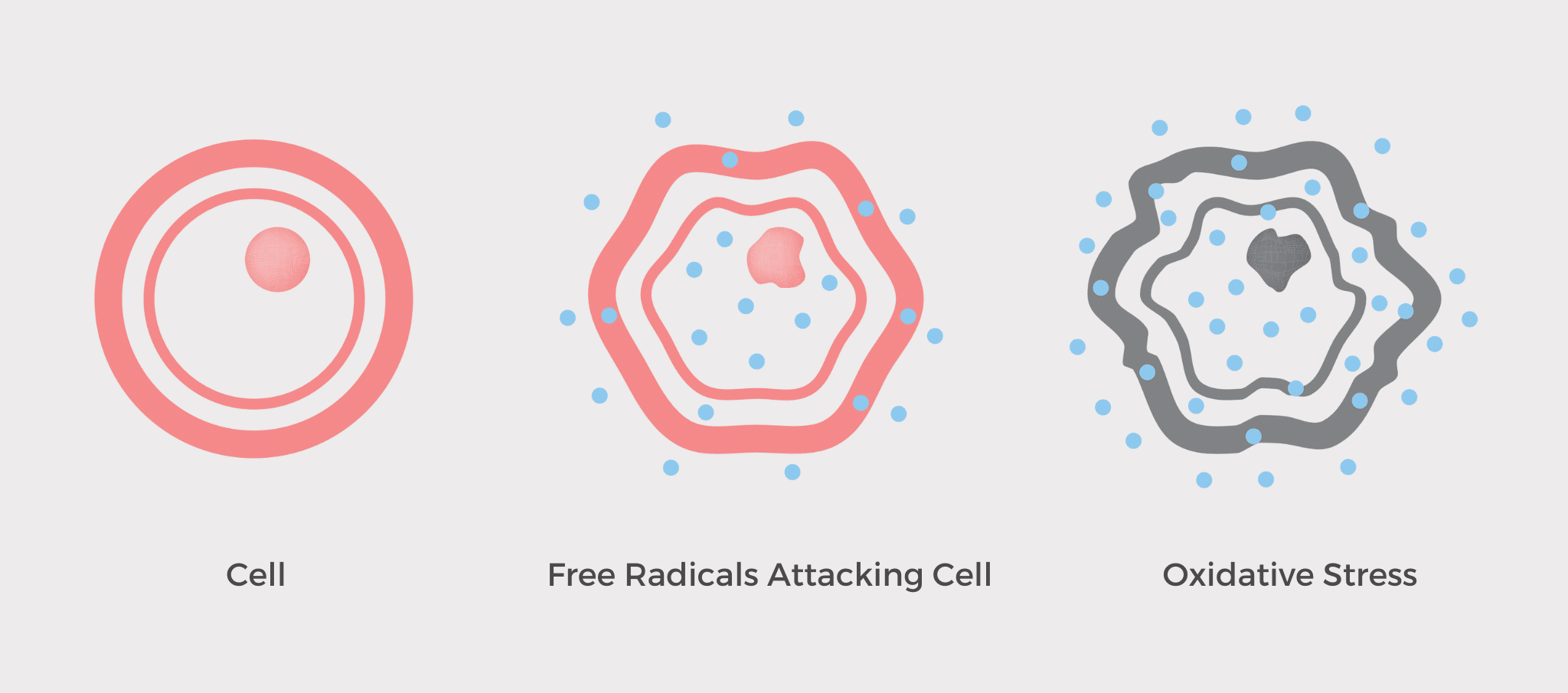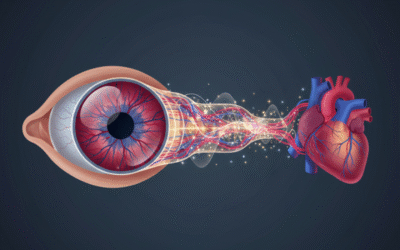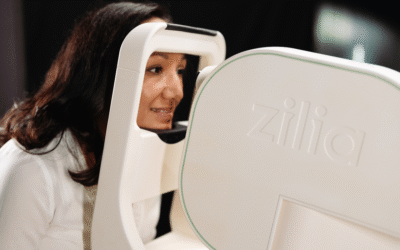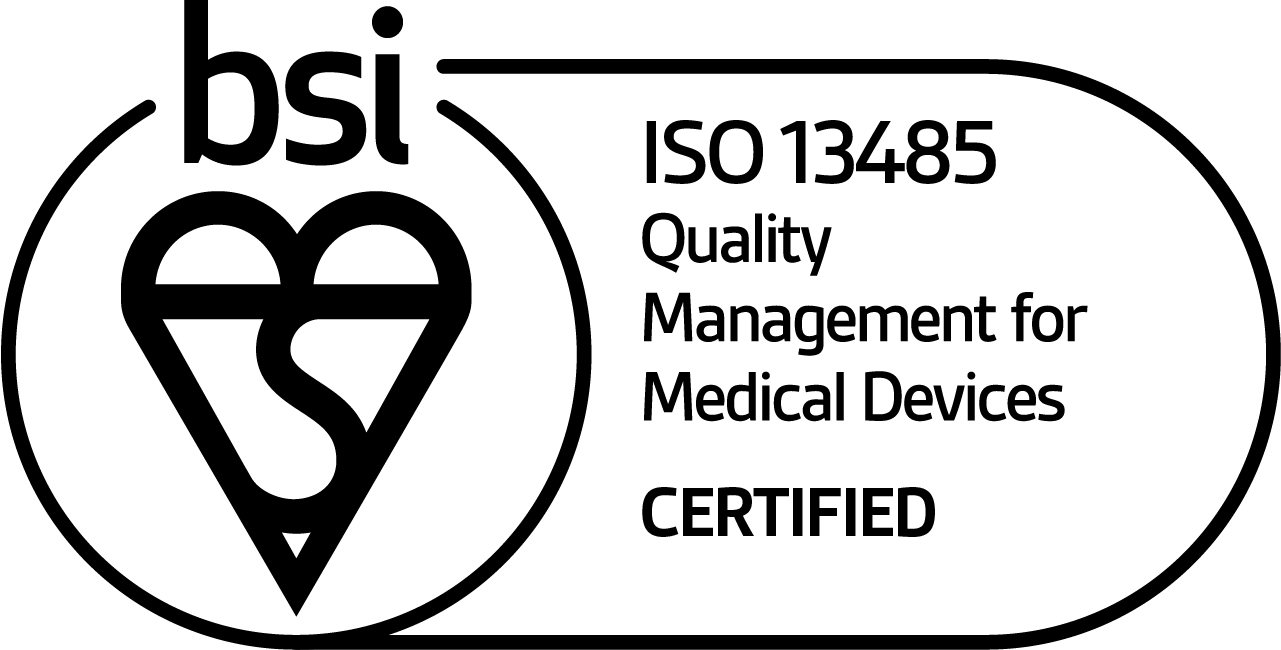Oxidative Stress and Eye Health

However, the same oxygen that sustains us can also be harmful when it generates free radicals that damage cellular components. This process, known as oxidative stress, is implicated in a variety of geriatric diseases, including eye disorders such as glaucoma, diabetic retinopathy (DR) and age-related macular degeneration (AMD) (1). In this article, we will explore the link between oxidative stress and these ocular diseases.
Oxidative Stress
Aerobic respiration, which occurs in the mitochondria of cells, is the process by which oxygen is used to convert fats and sugars into ATP, the energy currency of cells. As a byproduct, this process generates reactive oxygen species (ROS), which are a subset of free radicals. Cells with higher metabolic rates, such as those found in the retina, typically produce more ROS. Besides internal production, free radicals can also originate from external sources such as pollution, alcohol, tobacco smoke, radiation, heavy metals, industrial solvents, pesticides, and certain drugs (2).
Antioxidants are substances that can neutralize pro-oxidants, meaning they react with oxygen in the body to decrease the rate of free radical production. Under optimal conditions, the rate of oxidant elimination balances the rate and magnitude of oxidant formation. However, an imbalance between pro-oxidants and antioxidants can lead to oxidative stress and damage to body cells and tissues.
A period of ischemia or lack of oxygen (anoxia or hypoxia) followed by rapid restoration of blood flow can also cause oxidative damage known as reperfusion injury (3).

The Eye
The eye is a remarkable but fragile organ. The retina that coats the back of the eye is particularly vulnerable to oxidative damage because of its high metabolic activity and high oxygen consumption. In fact, the retina consumes more oxygen per unit weight than any other tissue in the body (4). Photoreceptors, the light-sensitive cells in the retina, have a high metabolic rate and use about 60% of the oxygen consumed by the retina (5). Because of the high energy requirements of the retina, energy deficiency can be detrimental to its function.
The oxygen supply to the retina is therefore tightly regulated and any disruption in oxygen levels can cause cellular stress and damage. Hemoglobin oxygen concentration fluctuations can also impair retinal function (6).
Oxidative stress can also be generated following ischemia during the early phase of reperfusion, which can result in the formation of hydroxyl radicals and cause significant retinal injury (7). When the retina is not adequately perfused, it can lead to oxidative stress, resulting in various ocular pathologies, including AMD, DR, and glaucoma (8). Therefore, it is crucial to maintain proper oxygenation and energy metabolism in the retina to prevent oxidative damage and preserve ocular health.
Glaucoma
Glaucoma is one of the leading causes of blindness in the world. It is a complex neurodegenerative disease and has an estimated prevalence of 3.5% in people aged 40 to 80 years (9). Glaucoma is characterized by a progressive loss of retinal ganglion cells (RGCs) and their axons, leading to structural and functional damage to the optic nerve, a condition known as glaucomatous optic neuropathy (GON) (10).
Given the aging population worldwide, glaucoma-induced irreversible visual impairment poses a significant challenge to public health, especially as this disease is often asymptomatic in its chronic form. Like other neurodegenerative conditions, such as Alzheimer’s or Parkinson’s, deficits in neuronal function ultimately cause glaucoma (11). Risk factors for the onset and progression of primary open-angle glaucoma (POAG), which is the most common form of the disease, include age, increased or fluctuating intraocular pressure (IOP), a thin central cornea, ethnicity, genetic factors, low blood pressure, low or fluctuating ocular perfusion pressure (OPP) (12).
It has been shown that one of the key contributors to glaucoma is the vulnerability of retinal ganglion cells (RGCs) to energy insufficiency. RGCs are highly metabolically active neuronal cells that depend primarily on mitochondria for their function and survival (5). RGCs are responsible for converting visual signals into neural signals and transmitting them to the brain via the optic nerve. When RGCs do not receive enough energy, they become damaged and eventually die, leading to progressive degeneration of the optic nerve and loss of visual function. This process is thought to be mediated by a combination of factors, including oxidative stress, inflammation, and vascular dysregulation (13).
The chronic inflammation associated with diabetes can also contribute to oxidative stress and further damage the retina.
Diabetic Retinopathy
DR is a progressive microvascular complication of the retina, related to diabetes, that can lead to permanent vision loss. It occurs when high levels of glucose in the blood damage the blood vessels that supply the retina, causing a chronic lack of oxygen. DR usually begins asymptomatically and progresses slowly over time. In the more advanced form, known as proliferative retinopathy, new abnormal blood vessels begin to grow in the retina. These abnormal blood vessels tend to bleed, resulting in further vision loss.
Multiple studies suggest that oxidative stress plays a crucial role in the development and progression of DR (14). High levels of glucose in the blood can lead to an increase in ROS production, which can damage the cells and tissues of the retina, exacerbating DR. Furthermore, the chronic inflammation associated with diabetes can also contribute to oxidative stress and further damage the retina. Thus, targeting oxidative stress and inflammation may represent a potential therapeutic strategy for preventing and treating DR (15).
Age-related Macular Degeneration
AMD, a common condition affecting the elderly, is the leading cause of blindness in developed countries (16). The exact cause of AMD is not fully understood, but research suggests that oxidative stress may play an important role in its development. In AMD, it’s believed that ROS could damage the cells in the macula and fovea, leading to cell death, inflammation and atrophy (17). Since these cells are responsible for central vision, the damage caused can lead to significant vision loss. The accumulation of toxic by-products, such as lipofuscin, in the retinal pigmented epithelial cells, which form the blood-retina barrier, can also contribute to AMD. Genetic predispositions, environmental exposures (e.g. pollution, sun exposure), and factors linked to lifestyle (e.g. smoking, diet, stress) can influence the individual susceptibility to oxidative stress and development of AMD. Early detection and management of the disease can help slow its progression and preserve vision.
Conclusion
The eye is a vital organ, and maintaining its health is crucial for ensuring that we can see clearly and enjoy the world around us. Oxidative stress can lead to significant damage to the cells in the eye and contribute to the development of various eye diseases, including glaucoma, DR, and AMD. However, by understanding the connections between oxidative stress and these conditions, researchers and healthcare professionals can develop targeted therapies that can help patients maintain their vision. Antioxidants treatment, for example, can help mitigate the effects of oxidative stress on the eye, providing a protective effect on the eye’s cells and vessels (18). In addition, by managing risk factors such as diabetes, hypertension and smoking, it is possible to reduce oxidative stress on the eye and help maintain good eye health. By taking proactive steps to manage oxidative stress, we can protect our eyes and our vision throughout our lives.
References
- Jun Wang, Mengling Li, Ziyue Geng, Saadullah Khattak, Xinying Ji, Dongdong Wu, Yalong Dang, “Role of Oxidative Stress in Retinal Disease and the Early Intervention Strategies: A Review”, Oxidative Medicine and Cellular Longevity, vol. 2022, Article ID 7836828, 13 pages, 2022. https://doi.org/10.1155/2022/7836828
- Phaniendra A, Jestadi DB, Periyasamy L. Free radicals: properties, sources, targets, and their implication in various diseases. Indian J Clin Biochem. 2015 Jan;30(1):11-26. doi: 10.1007/s12291-014-0446-0. Epub 2014 Jul 15. PMID: 25646037; PMCID: PMC4310837.
- Kalogeris T, Baines CP, Krenz M, Korthuis RJ. Cell biology of ischemia/reperfusion injury. Int Rev Cell Mol Biol. 2012;298:229-317. doi: 10.1016/B978-0-12-394309-5.00006-7. PMID: 22878108; PMCID: PMC3904795.
- Wong-Riley, M. T. (2010). Energy metabolism of the visual system. Eye and Brain, 2, 99-116. doi: 10.2147/EB.S9078
- Liu H, Prokosch V. Energy Metabolism in the Inner Retina in Health and Glaucoma. Int J Mol Sci. 2021 Apr 1;22(7):3689. doi: 10.3390/ijms22073689. PMID: 33916246; PMCID: PMC8036449.
- Sveinn Hakon Hardarson, Alon Harris, Robert Arnar Karlsson, Gisli Hreinn Halldorsson, Larry Kagemann, Ehud Rechtman, Gunnar Már Zoega, Thor Eysteinsson, Jon Atli Benediktsson, Adalbjorn Thorsteinsson, Peter Koch Jensen, James Beach, Einar Stefánsson; Automatic Retinal Oximetry. Invest. Ophthalmol. Vis. Sci. 2006;47(11):5011-5016. doi: https://doi.org/10.1167/iovs.06-0039.
- Wu L, Xiong X, Wu X, Ye Y, Jian Z, Zhi Z, Gu L. Targeting Oxidative Stress and Inflammation to Prevent Ischemia-Reperfusion Injury. Front Mol Neurosci. 2020 Mar 5;13:28. doi: 10.3389/fnmol.2020.00028. PMID: 32194375; PMCID: PMC7066113.
- B Domènech E, Marfany G. The Relevance of Oxidative Stress in the Pathogenesis and Therapy of Retinal Dystrophies. Antioxidants (Basel). 2020 Apr 23;9(4):347. doi: 10.3390/antiox9040347. PMID: 32340220; PMCID: PMC7222416.
- Reis, TF, Paula, JS, Furtado, JM. Primary glaucomas in adults: Epidemiology and public health-A review. Clin Experiment Ophthalmol. 2022; 50( 2): 128- 142. doi:10.1111/ceo.14040
- Križaj D. What is glaucoma? 2019 May 30. In: Kolb H, Fernandez E, Nelson R, editors. Webvision: The Organization of the Retina and Visual System [Internet]. Salt Lake City (UT): University of Utah Health Sciences Center; 1995-. Available from: https://www.ncbi.nlm.nih.gov/books/NBK543075/
- McMonnies C. Reactive oxygen species, oxidative stress, glaucoma and hyperbaric oxygen therapy. J Optom. 2018 Jan-Mar;11(1):3-9. doi: 10.1016/j.optom.2017.06.002. Epub 2017 Jul 29. PMID: 28760643; PMCID: PMC5777925.
- Grzybowski A, Och M, Kanclerz P, Leffler C, Moraes CG. Primary Open Angle Glaucoma and Vascular Risk Factors: A Review of Population Based Studies from 1990 to 2019. J Clin Med. 2020 Mar 11;9(3):761. doi: 10.3390/jcm9030761. PMID: 32168880; PMCID: PMC7141380.
- Kang EY, Liu PK, Wen YT, Quinn PMJ, Levi SR, Wang NK, Tsai RK. Role of Oxidative Stress in Ocular Diseases Associated with Retinal Ganglion Cells Degeneration. Antioxidants (Basel). 2021 Dec 5;10(12):1948. doi: 10.3390/antiox10121948. PMID: 34943051; PMCID: PMC8750806.
- Calderon GD, Juarez OH, Hernandez GE, Punzo SM, De la Cruz ZD. Oxidative stress and diabetic retinopathy: development and treatment. Eye (Lond). 2017 Aug;31(8):1122-1130. doi: 10.1038/eye.2017.64. Epub 2017 Apr 28. PMID: 28452994; PMCID: PMC5558229.
- Teodoro JS, Nunes S, Rolo AP, Reis F, Palmeira CM. Therapeutic Options Targeting Oxidative Stress, Mitochondrial Dysfunction and Inflammation to Hinder the Progression of Vascular Complications of Diabetes. Front Physiol. 2019 Jan 17;9:1857. doi: 10.3389/fphys.2018.01857. PMID: 30705633; PMCID: PMC6344610.
- Rasoulinejad SA, Zarghami A, Hosseini SR, Rajaee N, Rasoulinejad SE, Mikaniki E. Prevalence of age-related macular degeneration among the elderly. Caspian J Intern Med. 2015 Summer;6(3):141-7. PMID: 26644880; PMCID: PMC4650788.
- Ruan Y, Jiang S, Gericke A. Age-Related Macular Degeneration: Role of Oxidative Stress and Blood Vessels. Int J Mol Sci. 2021 Jan 28;22(3):1296. doi: 10.3390/ijms22031296. PMID: 33525498; PMCID: PMC7866075.
- Age-Related Eye Disease Study Research Group. A randomized, placebo-controlled, clinical trial of high-dose supplementation with vitamins C and E, beta carotene, and zinc for age-related macular degeneration and vision loss: AREDS report no. 8. Arch Ophthalmol. 2001 Oct;119(10):1417-36. doi: 10.1001/archopht.119.10.1417. Erratum in: Arch Ophthalmol. 2008 Sep;126(9):1251. PMID: 11594942; PMCID: PMC1462955.
Written by the Zilia Team on March 24, 2023
More on our Blog
The Eye: A Window into Cardiovascular Health | What the Retina Reveals About the Heart
The eyes have long been called the “window to the soul,” but they are also an extraordinary window into...
Zilia Launches Clinical Study to Investigate Ocular Oximetry as a New Glaucoma Biomarker
Quebec City, July 2, 2025 – Zilia is launching a new clinical trial in collaboration with Dr. Paul...
Zilia Launches Ocular Oximetry Study for Ischemic Optic Neuropathy and Retinal Vasculitis
Quebec City, June 26, 2025 – Zilia will investigate how measuring oxygen levels in the eye could transform...



